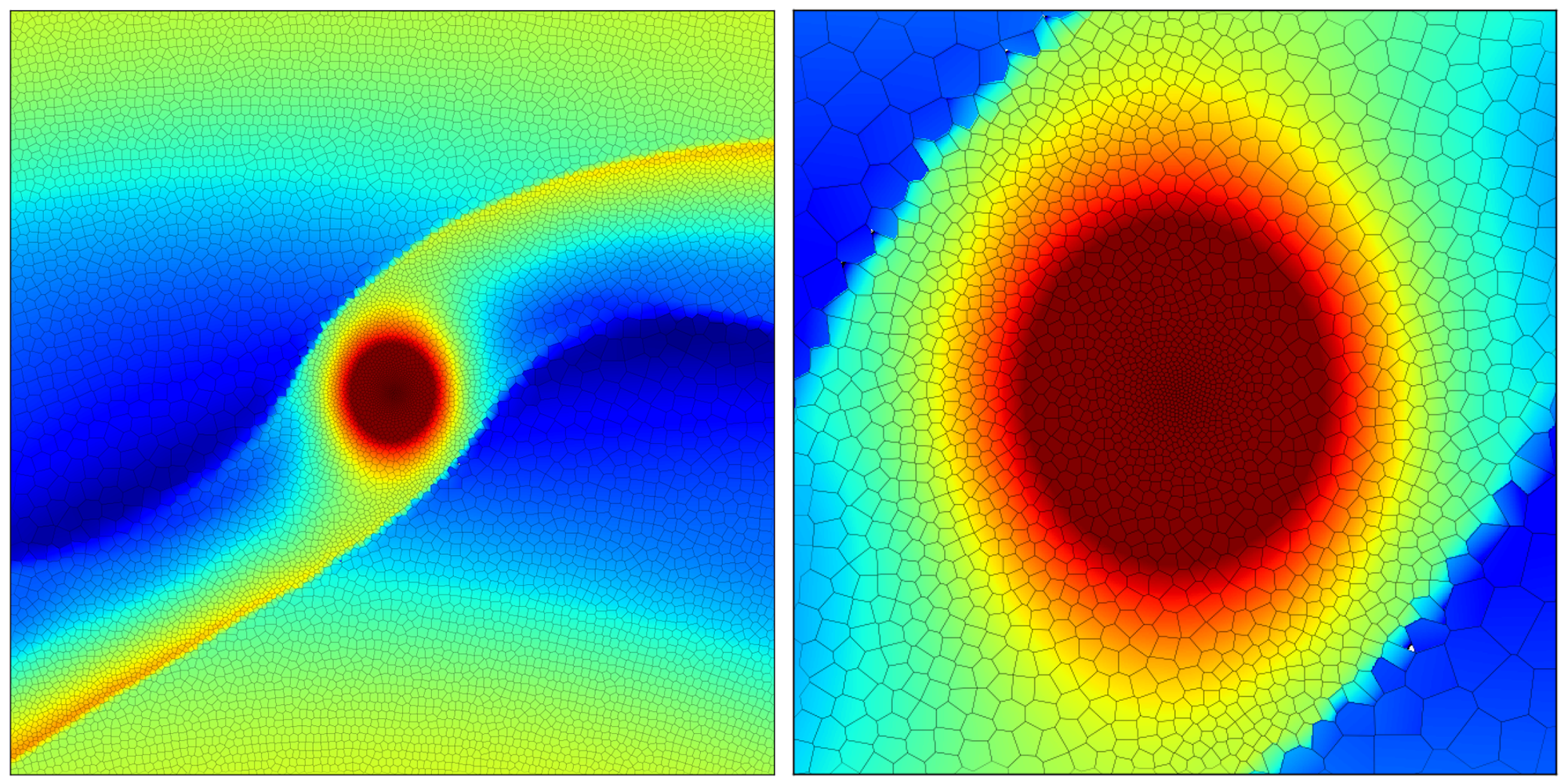The hydrodynamic evolution of a proto-planetary disk with an embedded planet. High viscosity suppresses the formation of deep gaps in the disk, such that the gas supply onto the planet is not halted and thus sustained accretion can proceed. This accretion of gas translates to a high concentration of Voronoi cells within the planet’s Hill sphere. The use of the moving Voronoi mesh allows for the study of circumplanetary discs within global circumstellar disc simulations, combining a coarse large-scale disc with a very high resolution Hill sphere region, thus concentrating all the computational power in the regions of interest; this provides an alternative to attempts to implement adaptive mesh refinement in cylindrical coordinates. The image shows the density field and mesh structure of a viscous Jupiter run (simulation JUP-VISC-B_512) close to the planet. Left panel: the visualized region covers a square area of side length equal to 0:5 (in units where Rp = 1), centered on the planet position at t = 100 orbits. Right panel: zoomed-in region of side length equal to 0.14, roughly twice the planet’s Hill sphere.
Methods: AREPO code





